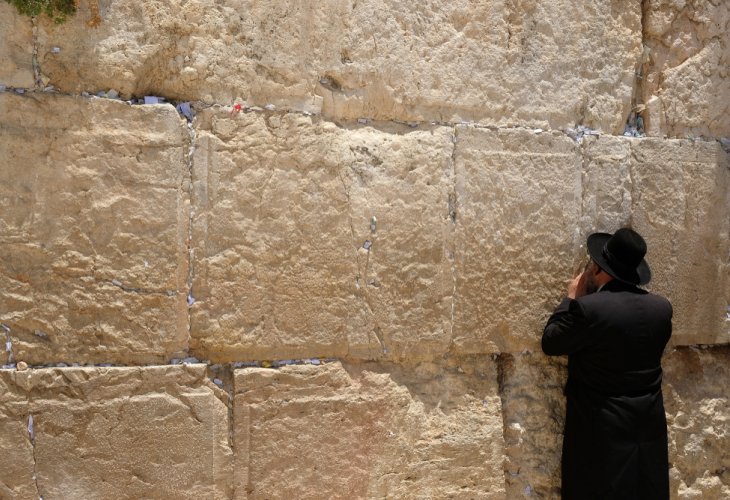Personality Development
The Inner Cry of “Where Are You?” – A Journey from Destruction to Self-Reconnection
How disconnection leads to spiritual destruction and awareness leads to repair.
 (Photo: shutterstock)
(Photo: shutterstock)The Hebrew month of Av marks the destruction of both our Holy Temples. But this destruction is rooted spiritually within the King’s palace, as the famous Talmudic phrase states (Sanhedrin 96): “You burned a burned house.”
Destruction is the outward expression of an inner spiritual collapse, so that when we commemorate the fall of the Temple, we also acknowledge the inner unraveling that preceded it.
How does a spiritual downfall begin? What causes a person to find themselves face-to-face with sin? And more importantly, what is the secret to repairing that brokenness?
To explore this, let us consider the first question ever asked in the Torah. Who asked it, and to whom? The answer lies in Genesis 3:9: “And the Lord G-d called to the man and said to him, ‘Where are you?’” (Ayeka)
The word Ayeka, "Where are you?", is the first question in the Torah. It is asked by G-d to Adam immediately after he sins. When Adam heard G-d seeking him in the garden, he and Eve hid. But G-d’s question wasn’t referring to Adam’s physical location- He knew exactly where Adam was. Rather, Ayeka was a divine prompt, intended to awaken self-awareness. G-d wanted Adam to reflect inwardly, and recognize how far he had fallen from his essence and purpose.
The question Ayeka invites deep introspection: "Where am I in relation to my true self? Am I really in the place I want to be?"
It asks us to examine the gap between our ideal and our reality, between the "I" (my conscious self) and the "self" (my unconscious core), between who I am and who I am meant to be. Ayeka is therefore not a rebuke, but a path to return. To return to ourselves, and from there, to return to G-d.
How Does Spiritual Breakdown Happen?
Our natural state, according to the sages, is one of “back-to-back”-disconnected, conflicted, and unresolved within.
When a person neglects inner work, they drift into a life detached from their inner truth. They experience internal friction, between who they want to be and who they are, between self-approval and social approval, between dependence and independence. The more unresolved contradictions grow, the more alienated they become from themselves.
This alienation feeds impulsive behaviors and weakens self-control. The distance from the true self leads to a spiritual breakdown (sin), which is essentially a deviation from one's intended purpose.
Eventually, such a person ends up facing the question: Ayeka?
Where am I in relation to my essence, to the dreams I once had, to the mission I hoped to fulfill? If they don’t answer this question honestly, they are bound to revisit the scene of their moral failure again.
What Is the Secret of Repair?
If sin is a result of disconnection, then healing begins with reconnection and self-awareness.
The more a person connects to themselves, recognizes their strengths, and acknowledges their weaknesses, the more equipped they are for authentic inner work. Awareness bridges the conscious “I” and the deeper “self,” reduces inner contradiction, and fosters clarity, responsibility, and growth.
Will this eliminate sin entirely? No. “There is no righteous person who never sins” (Ecclesiastes 7:20). But self-awareness ensures that we understand the root of our failures and avoid repeating them. Such a person can truly repent, by first returning to themselves, and then to G-d.
Awareness requires ongoing work, but it serves as protection. A self-aware person is far less likely to fall into sin.
Spiritual Implications
According to the Zohar, the purpose of mitzvot (commandments) is to channel divine abundance through the Shechinah (G-d’s presence). When we live with awareness, we elevate our intentions, long for meaning, and naturally desire to perform mitzvot.
Mitzvot connect heaven and earth. But sins- especially those rooted in disconnection from the self- create separation between G-d and the Shechinah, preventing divine flow.
This is the hidden cry in the word Ayeka (Where are you?)- a cry for the Shechinah, for divine closeness, for alignment between heaven and earth. Ayeka – Where is "Kah"? (Shechinah) – (Tikunei Zohar 94)
By longing for the rebuilding of the Temple, we also yearn for the rebuilding of the self. That begins with the quiet, piercing question:
“Where are you?”
Inbal Elhayani, M.A., is a certified NLP practitioner and a guided imagery therapist, writer, and lecturer.

